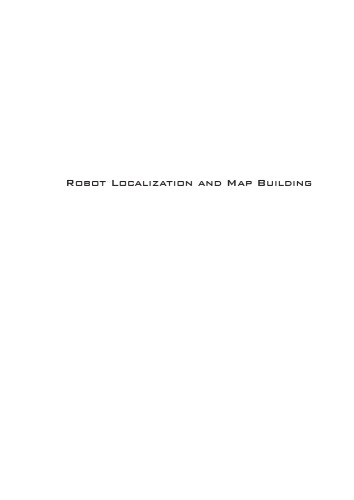

Most ebook files are in PDF format, so you can easily read them using various software such as Foxit Reader or directly on the Google Chrome browser.
Some ebook files are released by publishers in other formats such as .awz, .mobi, .epub, .fb2, etc. You may need to install specific software to read these formats on mobile/PC, such as Calibre.
Please read the tutorial at this link: https://ebookbell.com/faq
We offer FREE conversion to the popular formats you request; however, this may take some time. Therefore, right after payment, please email us, and we will try to provide the service as quickly as possible.
For some exceptional file formats or broken links (if any), please refrain from opening any disputes. Instead, email us first, and we will try to assist within a maximum of 6 hours.
EbookBell Team

5.0
100 reviews
ISBN 10: 0792377893
ISBN 13: 978-0792377894
Author: Jose Castellanos, Juan Tardós
During the last decade, many researchers have dedicated their efforts to constructing revolutionary machines and to providing them with forms of artificial intelligence to perform some of the most hazardous, risky or monotonous tasks historically assigned to human beings. Among those machines, mobile robots are undoubtedly at the cutting edge of current research directions. A rough classification of mobile robots can be considered: on the one hand, mobile robots oriented to human-made indoor environments; on the other hand, mobile robots oriented to unstructured outdoor environments, which could include flying oriented robots, space-oriented robots and underwater robots. The most common motion mechanism for surface mobile robots is the wheel-based mechanism, adapted both to flat surfaces, found in human-made environments, and to rough terrain, found in outdoor environments. However, some researchers have reported successful developments with leg-based mobile robots capable of climbing up stairs, although they require further investigation. The research work presented here focuses on wheel-based mobile robots that navigate in human-made indoor environments.
The main problems described throughout this book are:
The book emphasizes the generality of the solutions proposed to the different problems and their independence with respect to the exteroceptive sensors mounted on the mobile robot. Theoretical results are complemented by real experiments, where the use of multisensor-based approaches is highlighted.
Chapter1 : Introduction
Chapter 2: Content
Chapter 3: Conclusion
Chapter 4: Appendices
Chapter 5: Glossary
Chapter 6: References
Chapter 7: Index
simultaneous map building and localization for an autonomous mobile robot
robot localization and mapping cmu
robotics localization
robot localization ros
mobile robot localization and map building